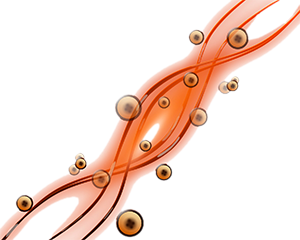DNA encoded chemical library (DECL) technologies have revolutionized the field of drug discovery by enabling the screening(“selection”) of millions or even billions of small molecules in a high-throughput and cost-effective manner.
Some closing remarks on the advancements and potential future directions of DEL technologies are summarised below:
Advancements in DNA Encoded Chemical Library Technologies:
Over the past decade, DCEL technologies have evolved rapidly, leading to significant advancements and improved capabilities. Some key advancements are:
- Library Diversity: Together with the reaction palette and library assembly toolbox, the size and diversity of DNA encoded chemical libraries have expanded exponentially, allowing for the screening of vast chemical space. This has led to the identification of novel hits and the exploration of new target classes.
- Screening Methods: Innovative screening methodologies, such as in-solution or on-cell affinity selection techniques, and new powerful DNA sequencing-based readouts have enhanced the efficiency and sensitivity of hit identification. These methods have streamlined the screening process and, thus accelerated the DECL-based lead discovery.
- Hit Validation: Hit validation is a critical step in the DECL drug discovery process. Given that hit assessment/validation assays, such as biochemical or cellular assays, can be conducted on DNA-tagged compounds to confirm their activity, potency, and selectivity, the development of hit validation methodologies through on-DNA hit resynthesis has emerged as a significant breakthrough. By eliminating the need for laborious and resource-intensive compound resynthesis, this advancement has facilitated the evaluation of substantially larger set of DNA-encoded chemical library (DECL) “lead candidates.” As a result, the efficiency of the downstream “hit-to-lead” processing has been significantly enhanced.
- Hit Optimization: DECL technologies have also been integrated into hit optimization campaigns, allowing for the rapid identification of structure-activity relationships (SAR) and the optimization of lead compounds.
- Technology Integration: DECL technologies have been combined with other screening modalities, such as fragment-based drug discovery and virtual screening, to leverage their complementary strengths. These integrations have further enhanced the hit identification and lead optimization processes.
Challenges and Opportunities
While DNA encoded chemical library technologies have demonstrated remarkable potential, several challenges and opportunities remain. For example:
- Library Quality: Ensuring the quality and diversity of the chemical libraries is essential to maximize the chances of identifying high-quality hits. Continuous efforts are needed to improve library synthesis methodologies and diversify the chemical space covered by DECLs.
- Target Space: Expanding the range of target classes amenable to DECL screening is an ongoing challenge. Overcoming the limitations associated with membrane proteins, protein-protein interactions, and other challenging target classes would greatly enhance the applicability of DECL technologies.
- Data Analysis: The analysis and interpretation of large-scale screening data generated by DECL technologies present computational challenges. The development of robust and efficient data analysis tools and algorithms is crucial to extract meaningful insights and facilitate hit identification.
Future Perspectives and Applications
Looking at next decade, several exciting opportunities and potential applications of DNA encoded chemical library technologies emerge:
- Expanded Target Space: Continued advancements in library design, synthesis, and screening methodologies are expected to broaden the range of target classes that can be effectively explored using DECL technologies. This could open new avenues for the discovery of therapeutics against previously undruggable targets.
- Evolution Fragment-Based DECLs: Combining the principles of fragment-based drug discovery with DECL technologies (see Self-assembled libraries) holds promise for fragment screening against large libraries. This approach can facilitate the identification of starting points for lead optimization and enhance the efficiency of drug discovery efforts.
- Beyond conventional Small Molecules: Expanding the chemical space covered by DECL technologies to include larger molecules, such as peptides and macrocycles, would enable the discovery of diverse modalities beyond traditional small molecules. This could provide access to new therapeutic avenues.
- Integration of artificial intelligence (AI) and machine learning: the integration holds tremendous potential for the future of DNA-encoded chemical library (DECL) technologies. AI algorithms can assist in data analysis, pattern recognition, and predictive modeling, enabling more efficient hit identification and lead optimization. Machine learning algorithms can help identify relevant chemical features associated with desired target interactions, leading to the design of more focused and optimized libraries. Additionally, AI-driven approaches can facilitate the prediction of compound properties, such as solubility, stability, and bioavailability, enhancing the selection and prioritization of compounds for downstream development. Eventually, the combination of DECL technologies with AI and machine learning has the potential to revolutionize drug discovery by accelerating the identification of novel therapeutics and reducing the overall time and cost required for the discovery and development process.

